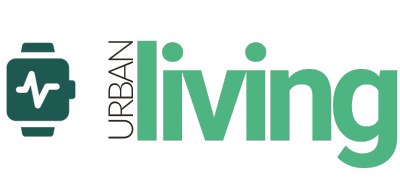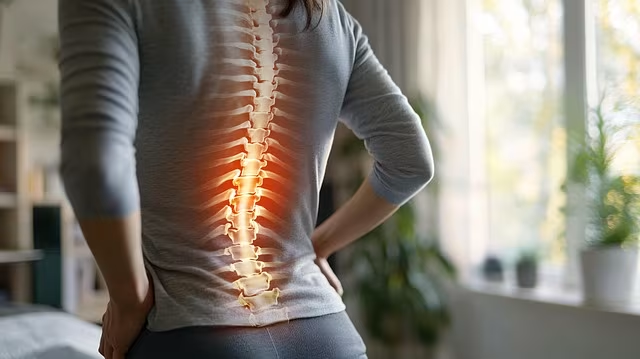Understanding Scoliosis: More Than Just Poor Posture
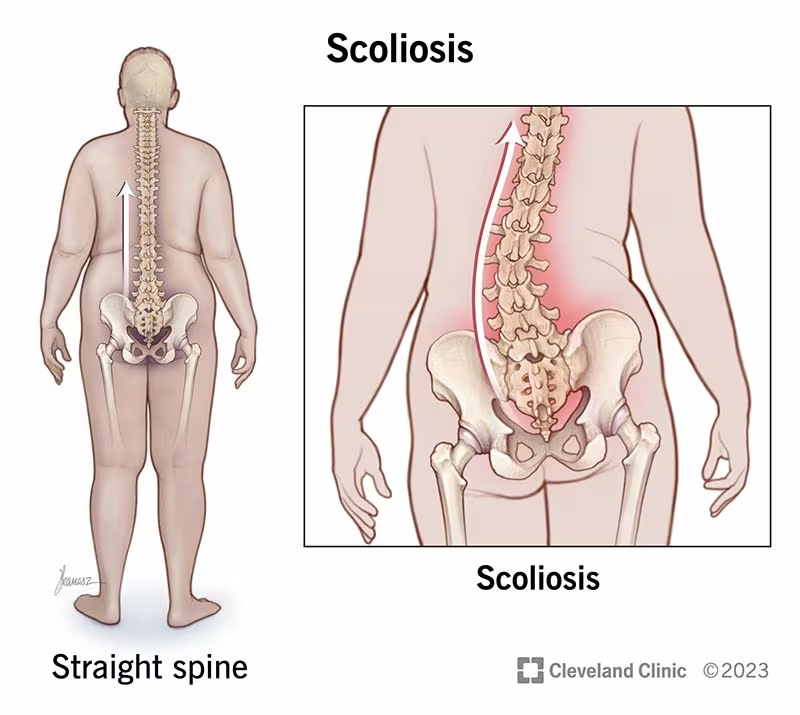
Scoliosis is a three-dimensional deformity of the spine characterized by an abnormal sideways curvature.
When viewed from behind, a normal spine appears straight, while a spine affected by scoliosis forms either a “C” shape (one curve) or an “S” shape (two curves).
This condition is distinct from poor posture—scoliosis is primarily caused by genetic factors leading to uneven spinal growth, whereas poor posture results from habitual behavior over time.
A curvature measuring more than 10 degrees is clinically considered scoliosis.
The severity of the condition determines the appropriate treatment approach, with different protocols applied based on the degree of curvature.
In Singapore, scoliosis affects approximately 2-3% of the population, with adolescent girls being particularly vulnerable.
Studies show that the prevalence of adolescent idiopathic scoliosis in Singaporean schoolgirls is 1.4% at ages 11-12 and increases to 2.2% at ages 13-14.
You might like: Hip Replacement Surgery in Singapore: Cost, Risks
Anatomy of the Spine and Scoliosis Development
The human spine comprises 24 vertebrae stacked on top of one another to form the spinal column—the body’s main upright support.
When viewed from the side, a healthy spine forms three natural curves: the cervical spine (neck) curves slightly inward, the thoracic spine curves outward, and the lumbar spine (lower back) curves slightly inward.
From a posterior view, these vertebrae should form a straight column, keeping the head centered over the body.
Each vertebra consists of similar components, with the main section formed by a round block of bone called the vertebral body.
These vertebrae increase slightly in size from the neck downward to better support and balance the larger muscles connected to the lower spine.
Scoliosis disrupts this natural alignment, causing the spine to curve laterally and often rotate, which makes the waist, hips, or shoulders appear uneven.
Related article: Rotator Cuff Tear Treatment in Singapore
Types and Causes of Scoliosis
There are several types of scoliosis, each with different causes and characteristics:
Idiopathic Scoliosis
The most common type, affecting approximately 80-90% of all cases, has no known specific cause (hence “idiopathic“). It tends to run in families and is significantly more common in girls than boys (ratio of 7:1). Idiopathic scoliosis is categorized by the age of onset:
- Infantile Idiopathic Scoliosis: Occurs from birth to three years of age and often resolves naturally with time.
- Juvenile Idiopathic Scoliosis: Develops between four and nine years of age, has strong familial connections, and can be progressive.
- Adolescent Idiopathic Scoliosis: The most common form, occurring from age ten until growth completion, with the most severe cases affecting females.
Related article: Slipped Disc Treatment in Singapore: Causes, Risks, Cost
Congenital Scoliosis
Present at birth due to spinal formation defects during fetal development. This type is often associated with other organ abnormalities.
Neuromuscular Scoliosis
Results from neurological or muscular conditions that affect spinal support, such as cerebral palsy, spina bifida, or muscular dystrophy.
Degenerative Scoliosis
Occurs later in life, typically due to the degeneration of spinal discs or arthritis in the spinal joints, leading to asymmetrical wear and tear.
Contrary to popular belief, scoliosis is NOT caused by:
- Carrying heavy objects on one side (such as school bags)
- Sports or physical activities
- Poor calcium intake
- Bad posture or sleeping positions
- Accidents or minor trauma
This might help: Sciatica Treatment in Singapore: Causes and Risks
Signs and Symptoms of Scoliosis
Scoliosis is generally a painless condition, especially in its early stages, with most people noticing changes in physical appearance before experiencing any discomfort.
The condition creates characteristic asymmetries that become increasingly visible as the spinal curve progresses.
Common early signs include uneven shoulders where one appears higher than the other, and uneven hip levels that cause clothing to fit unevenly or hang at different lengths.
Patients often notice their body leaning to one side, creating an uneven waistline that may be particularly noticeable when wearing fitted clothing.
A prominent or protruding shoulder blade on one side becomes visible, especially when viewed from behind, while females may notice uneven breast development or males may observe uneven nipple positioning.
The rib hump or prominence becomes particularly apparent when bending forward, representing one of the most characteristic signs of scoliosis.
Read more: Low Back Pain in Singapore: Causes, Prevention and Treatment
Other observable changes include greater space between one arm and the body compared to the other side, and the head not appearing centered above the pelvis when viewed from behind.
As the spine curves, the body naturally tries to maintain balance by keeping the head centered over the pelvis, and this compensation mechanism can cause noticeable asymmetry throughout the torso and limbs.
For patients with severe, untreated scoliosis, more serious symptoms may develop over time.
These can include persistent back pain that interferes with daily activities, breathing difficulties due to restricted lung capacity as the curved spine compresses the chest cavity, cardiac issues resulting from pressure on internal organs, and neurological complications that may affect nerve function.
Diagnosis and Screening
Early detection of scoliosis is crucial for effective treatment. In Singapore, the School Health Service conducts routine screenings for schoolchildren, particularly girls aged 13 and 16, using the Adams forward bend test.
During this test, the examiner observes the patient’s back as they bend forward at the waist (as if diving into a pool).
This position makes spinal abnormalities more visible, especially the rotation of vertebrae that causes rib prominence on one side.
When scoliosis is suspected, healthcare providers will:
- Conduct a thorough physical examination
- Review medical history, looking for potential causes
- Order imaging tests such as X-rays, which are essential for:
- Confirming the diagnosis
- Measuring the curve using the Cobb method (curves must exceed 10 degrees to be considered scoliotic)
- Tracking the progression of the curve over time
- Identifying skeletal maturity using the Risser sign
In some cases, additional imaging such as MRI may be necessary to rule out tumors, infections, or neurological issues that might contribute to the spinal curvature.
Read more: Which Orthopedic Doctor in Singapore Should You Consider?
Treatment Options in Singapore
Treatment recommendations for scoliosis depend on several critical factors that healthcare providers carefully evaluate before developing an individualized treatment plan.
These factors include the age of the patient, skeletal maturity and whether growth is complete, the degree and location of the spinal curve, the risk of progression based on current trends, and patient and family preferences regarding treatment approaches.
Singapore’s healthcare system offers comprehensive treatment approaches that range from observation to complex surgical interventions, depending on the specific needs of each patient.
Read more: Best Orthopedic Doctor in JB for Singaporeans
1. Observation
For mild curves (less than 25 degrees) or in patients who have finished growing, regular monitoring with examinations and X-rays every 4-6 months may be sufficient. This “wait and see” approach allows doctors to track whether the curve is stable or progressing before considering more intensive interventions.
2. Bracing
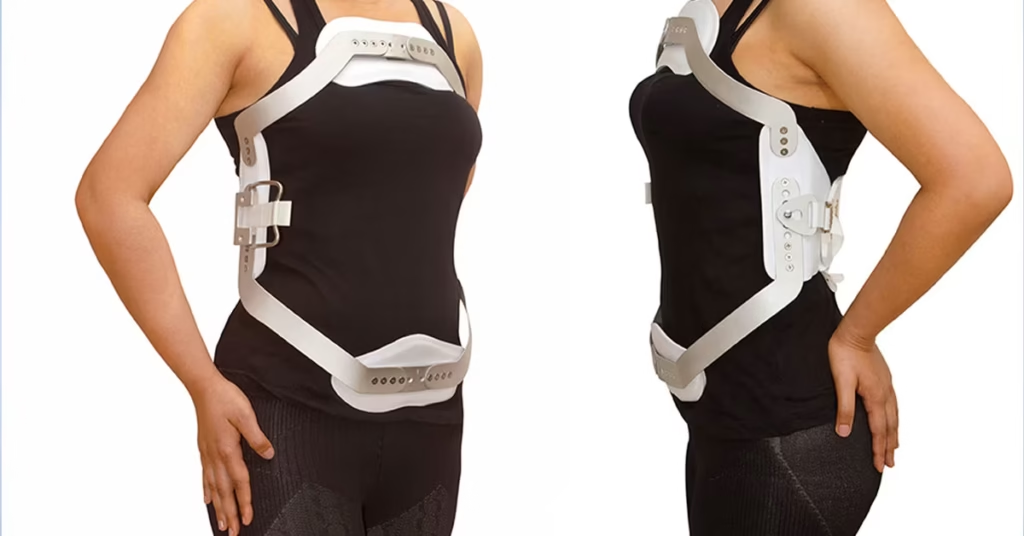
Bracing is typically recommended for growing children with curves measuring between 25-40 degrees, particularly when curves are progressing rapidly at a rate of more than 5 degrees within a 6-month period.
The primary purpose of bracing is not to correct the existing curve but rather to prevent it from worsening during the critical growth period when progression is most likely to occur.
Singapore utilizes various types of braces that are custom-fitted to each patient’s specific curve pattern and body type, with the goal of maintaining curve stability until skeletal maturity is reached.
- Thoraco-lumbar-sacral orthosis (TLSO): Also known as the Boston brace, this underarm brace is effective for curves in the lower thoracic and lumbar spine. It’s designed to be worn under clothing and is less visible than other options.
- Milwaukee Brace: A comprehensive brace with a neck ring, used for higher thoracic curves. Though effective, it’s more visible and may be less comfortable in Singapore’s hot climate.
Bracing success depends on consistent wear—typically 16-23 hours daily until skeletal maturity is reached (usually around age 16 for girls and 18 for boys).
Studies show that bracing is effective in stopping curve progression in about 80% of patients when used as prescribed.
3. Physiotherapy
While physical therapy alone cannot correct structural spinal curves, it serves as a valuable complementary treatment that provides multiple benefits for scoliosis patients.
Physiotherapy can improve posture and body awareness, helping patients develop better movement patterns and spinal alignment during daily activities.
Strengthening trunk muscles provides better spinal support and may help reduce the progression of smaller curves while improving overall function.
Physical therapy can also reduce pain associated with scoliosis through targeted exercises and manual therapy techniques, maintain flexibility in the spine and surrounding muscles, and provide education on ergonomics and modifications for daily activities.
Evidence-based exercise programs, such as those focusing on improving trunk rotation strength imbalances, may help stabilize curves in some patients.
Singapore physiotherapists can provide specialized programs designed to address the specific needs of scoliosis patients.
4. Surgical Treatment
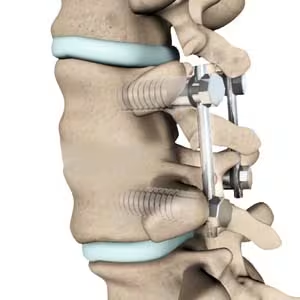
Surgical intervention becomes a consideration when conservative treatments are insufficient or when the curve reaches levels that pose health risks or significantly impact quality of life.
Surgery is typically recommended when the curve exceeds 40-45 degrees in growing children, as curves of this magnitude have a high likelihood of continued progression even after skeletal maturity.
In adults, surgery may be considered when curves exceed 50 degrees, particularly if they are causing symptoms or continuing to progress.
Surgical treatment is also indicated when bracing has failed to prevent progression despite consistent use, when the curve is causing significant pain, breathing problems, or other health issues that affect daily function, or when there are cosmetic concerns that significantly impact the patient’s quality of life and psychological well-being.
Singapore’s orthopedic and spine surgery centers offer advanced surgical approaches that utilize modern techniques and technologies to achieve optimal correction while minimizing risks and recovery time for patients requiring surgical intervention.
Surgical approaches in Singapore include:
- Posterior Spinal Fusion: The most common procedure, involves approaching the spine from the back to insert rods, hooks, and screws that straighten and stabilize the curved portion. Bone grafts are placed to fuse the vertebrae together permanently.
- Anterior Spinal Fusion: Approaching from the front, this technique may be used for certain curve patterns or in combination with posterior fusion for severe cases.
- Thoracoscopic Surgery: For suitable candidates, this minimally invasive “keyhole” approach requires only 4-5 small incisions on the side of the chest, resulting in less scarring and potentially faster recovery.
Modern surgical techniques in Singapore provide excellent outcomes with proper patient selection and experienced surgical teams. The fusion process typically takes 3-6 months to initially solidify and continues strengthening for up to 12 months.
Post-surgical hospital stays average 7-9 days, with a return to school possible within approximately one month. Most patients can resume normal activities within 6-9 months, though certain high-impact activities may require permanent restrictions or modifications.
Recovery and Rehabilitation
Post-Bracing
Once bracing treatment is completed, patients will need:
- Regular follow-up examinations to ensure curve stability
- Possible physical therapy to address any muscle weakness or imbalances
- Gradual return to all activities, including sports
Post-Surgery
Following surgical intervention, recovery includes:
- Initial focus on rest and proper spinal alignment
- Physical rehabilitation starting around three months post-surgery
- Exercises to strengthen back muscles and improve flexibility
- Regular check-ups with X-rays to monitor fusion progress
- Gradual return to activities, with full participation possible in most cases after 9-12 months
Living with Scoliosis in Singapore
With proper treatment and management, people with scoliosis can lead full, active lives. Most individuals with treated scoliosis participate in the same activities as their peers, including sports and exercise.
For women with scoliosis, pregnancy is generally not a concern—those with treated scoliosis deliver healthy babies without complications, though they may experience increased back pain compared to women without scoliosis.
Long-term outlook depends on several factors:
- Severity of the curve
- Age at diagnosis
- Treatment compliance
- Individual response to treatment
Without appropriate treatment, moderate to severe scoliosis may lead to:
- Chronic back pain
- Reduced lung capacity and respiratory issues
- Decreased self-image
- Potential heart complications in severe cases
Prevention and Early Intervention
While scoliosis itself cannot be prevented (especially idiopathic forms), early detection and intervention can prevent curve progression and associated complications.
Parents and educators in Singapore should be aware of the signs of scoliosis and ensure children participate in school screening programs. If concerns arise between screenings, consultation with a healthcare provider is recommended.
For those with mild scoliosis or family history of the condition, regular exercise to maintain core strength and spinal health is beneficial, though it cannot correct an existing structural curve.
FAQ: Common Questions About Scoliosis Treatment
What is the main cause of scoliosis?
Approximately 80% of scoliosis cases are classified as idiopathic, meaning the exact cause is unknown.
However, research suggests genetic factors play a significant role. The remaining 20% result from congenital abnormalities, neuromuscular conditions, or degenerative changes.
Contrary to common beliefs, scoliosis is not caused by poor posture, heavy backpacks, or insufficient calcium intake.
Can scoliosis be completely cured?
There is no complete “cure” for structural scoliosis, but effective treatments can stop progression and sometimes improve the curve.
Early intervention, especially during growth periods, offers the best outcomes.
While bracing can prevent worsening, and surgery can significantly correct deformity, both aim to manage rather than eliminate the condition.
At what degree of curvature is surgery recommended?
Surgical intervention is typically recommended when curves reach 40-45 degrees in growing children or exceed 50 degrees in adults.
However, decisions are individualized based on curve progression rate, pain levels, respiratory function, and patient preferences.
Some patients with smaller curves may require surgery if they experience significant symptoms or rapid progression.
Does scoliosis get worse with age?
Idiopathic scoliosis can progress during growth periods, particularly during adolescent growth spurts.
After skeletal maturity, curves under 30 degrees typically remain stable, while curves exceeding 50 degrees may continue to progress at a rate of approximately 1 degree per year.
Degenerative scoliosis, which develops later in life, may worsen with age-related spinal degeneration.
Can exercises alone correct scoliosis?
Exercise cannot structurally correct established scoliosis curves—much like brushing teeth cannot straighten crooked teeth.
However, specific exercise programs can help manage symptoms, improve posture, strengthen supporting muscles, and potentially slow progression in mild cases.
Physical therapy is most effective as a complementary approach alongside other treatments rather than as a standalone solution.
How effective is bracing for scoliosis in Singapore’s climate?
Bracing effectiveness remains high in Singapore despite the hot, humid climate.
Modern braces use lightweight materials and can be worn under clothing.
Studies show compliant brace wear (16+ hours daily) prevents curve progression in approximately 80% of adolescents.
While comfort can be challenging in Singapore’s weather, medical teams work to maximize comfort and adherence through proper fitting and material selection.
What happens if scoliosis is left untreated?
Consequences of untreated moderate to severe scoliosis may include:
- Progressive curve worsening
- Chronic back pain and physical disability
- Reduced lung capacity and breathing difficulties
- Heart problems in severe cases
- Negative self-image and psychological impacts
- Reduced quality of life and potentially shortened lifespan in extreme cases
Mild curves (under 25 degrees) may not require treatment beyond monitoring, as they often remain stable throughout life.
Can I receive chiropractic care for scoliosis in Singapore?
Chiropractic care is available in Singapore as a complementary approach for scoliosis management.
While chiropractic adjustments cannot correct structural curves, they may help manage pain, improve function, and address secondary issues related to scoliosis.
Patients should seek chiropractors experienced with scoliosis and maintain communication with their orthopedic specialists to ensure coordinated care.
Will scoliosis affect pregnancy?
Women with scoliosis can generally experience normal pregnancies and deliveries.
While pregnancy may temporarily increase back pain due to added weight and postural changes, it typically doesn’t cause significant curve progression.
Women who have had spinal fusion may have specific considerations regarding epidural anesthesia during delivery, but alternatives are available.
Consultation with both orthopedic and obstetric specialists is recommended.
How much does scoliosis surgery cost in Singapore?
The cost of scoliosis surgery in Singapore ranges approximately between SGD 25,000 and SGD 45,000, depending on complexity, surgical approach, and hospital choice.
This typically includes hospitalization, surgical fees, and immediate post-operative care.
Additional costs may include pre-surgical evaluations, specialized equipment like custom braces, and post-operative rehabilitation.
Both public and private healthcare options are available, with subsidies possible for eligible patients at public hospitals.
Are there screening programs for scoliosis in Singapore?
Yes, Singapore has established scoliosis screening programs through the School Health Service under the Youth Preventive Services Division.
These screenings typically target students at ages 13 and 16, with particular attention to girls who have a higher risk.
The screening uses the Adam’s forward bend test to identify potential cases requiring further evaluation.
Early detection through these programs has significantly improved treatment outcomes for Singaporean youth.
Can adults develop scoliosis?
Yes, adults can develop scoliosis in two main ways:
- Adult idiopathic scoliosis: Undiagnosed childhood scoliosis that becomes apparent or worsens in adulthood
- Degenerative scoliosis: Develops as a result of age-related spinal degeneration, typically after age 50
Adult-onset scoliosis is often accompanied by pain and functional limitations, requiring different treatment approaches than adolescent scoliosis.
How long is recovery after scoliosis surgery?
Recovery timeline after scoliosis surgery typically involves:
- Hospital stay: 5-9 days
- Return to school/desk work: 3-4 weeks
- Return to light physical activities: 3-6 months
- Return to full activities/sports: 9-12 months
Complete fusion and healing may take up to a year, but most patients experience significant improvements in function and appearance within the first few months post-surgery.
Conclusion
Scoliosis treatment in Singapore follows international standards of care with local adaptations for the region’s unique needs.
With early detection through comprehensive school screening programs, a full spectrum of treatment options including observation, bracing, physiotherapy, and advanced surgical techniques, patients with scoliosis can expect excellent outcomes.
The key to successful management lies in early intervention, appropriate treatment selection based on individual factors, and consistent follow-up care.
By working closely with healthcare providers specialized in spinal deformities, individuals with scoliosis in Singapore can maintain active, healthy lifestyles with minimal limitations.
For suspected scoliosis, consultation with an orthopedic specialist experienced in spine care is recommended to develop a personalized treatment plan addressing the unique aspects of each case.
